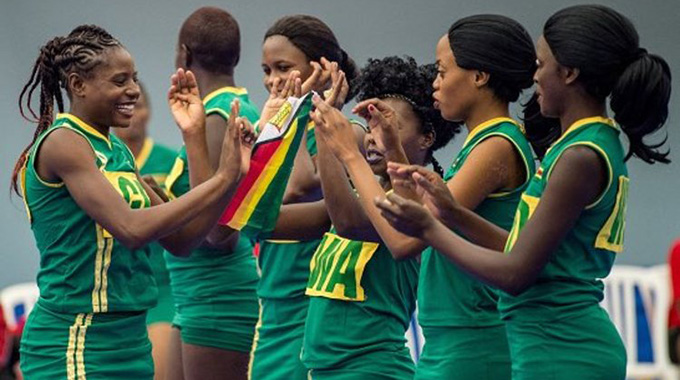Programme changes face of goat farming, marketing

REGARDLESS of its economic significance in propping household food security and financing the occasional socio-economic expense, goat farming has since time immemorial lacked formalised marketing structures like other livestock categories rendering farmers incapable of controlling the value chain and market or do their business profitably.
Essentially, this means the bulk of small to medium-scale goat producers do not belong to any formal group, which makes it difficult for them to do effective bargaining each time they want to sell their products.
This has left producers prone to manipulation by middlemen who rip them off and walk away with up to 55 percent of the share value, leaving them with only 17 percent in most cases.
On the one hand, the absence of a product grading system, poor quality product, seasonality of demand, inconsistent product supply and insufficient research to identify new markets and expand existing ones has not helped the goat farmer’s situation much.
The situation is also further exacerbated by the sad reality that until recent times, goat products have been mainly consumed within the localities of the farmers, with most of them sold at local markets that cater for domestic consumption, which meant that the products have not been considered mainstream goods in formal markets despite their potential and health beneficial chemical nutrient composition.
While the absence of organised and streamlined marketing structures is typical of developing countries, Zimbabwe included, it is important to point out that even in the developed world, goat and sheep marketing structures are less developed compared to those of other livestock species and products.
The Government of Zimbabwe has been making numerous efforts to improve livestock production and profitability, which has culminated in the launch of the livestock development plan with priority on animal nutrition, genetic improvement, animal health and market development.
And working closely with the European Union (EU) funded Value Chain Alliance for Livestock Upgrading and Empowerment (VALUE) project funded to the tune of €40 million, the Government has undertaken to address challenges bedevilling the livestock sector with goat production recently hogging the limelight following the establishment of 12 centres meant to boost local meat value chains across the country.
Rushinga goat improvement centre became the latest to join 11 other such centres established in Beitbridge, Binga, Buhera, Chikomba, Chipinge, Gwanda, Lupane, Matobo, Mbire, Mudzi and Nkayi, raising hopes that goat farming and marketing will soon be more organised and profitable in goat-farming strongholds while the middlemen who used to fleece the farmers will be effectively shut out of the matrix.
The centres will among other functions become primary business hubs for small and medium goat producers offering various services such as breed improvement, dipping, veterinary drug sales, sale of fodder seed and aggregation of bulk slaughter stock.
They will also promote on-farm feed formulation, creation of livestock business centres and production of livestock inputs and veterinary vaccines and medicines, but most importantly maintaining value for money by cutting out middlemen who for years have been the biggest parasite sucking the farmers dry.
These centres will enable farmers to access information on markets and also make it possible for producers to explore those markets jointly instead of going it alone as has been the case all along. Groups always have better bargaining power compared to individuals.
There are markets that require bulky supplies that individuals cannot meet so working as groups can make it possible for producers to pool resources and meet demand.
There are many yawning global markets that individual farmers have always failed to penetrate, but with the establishment of the centres, they can always collaborate even on a national basis and explore such markets.
Farmers can also achieve more within a short space of time by working together in organised groups.
It is refreshing to note that producers have responded positively to the establishment of the centres with 70 percent of the 10 000 registered farmers getting affiliated to the 12 district goat producer business associations.
On a more positive note, 312 Boer, Sannen, Toggenburg and Kalahari red goat breeding stock from Namibia have already been imported to help improve breeds.
The breeding stock was distributed among four institutions for multiplication namely Zvikomborero Farm, Michview Enterprises, Matopo, and Grasslands Research Institutes with two bucks being delivered to each goat improvement centre for mating services under the management of the Goat Producers Business Associations (GPBAs).
Rushinga GPBA business development officer, Regis Kasako, recently hinted that goat producers were now dipping their goats, accessing veterinary drugs, growing fodder crops and selling them collectively and directly to consumers, which has increased their profit margins by at least US$3 per goat.
This is an exciting development considering that the programme is still in its infancy in the district and looks set to increase benefits with time.
The reality on the ground is that the global goat population is way below that of cattle and sheep, with Africa and Asia contributing 38,7 and 55,4 percent of the global goat population respectively making the two potential major players in the goat industry value chain.
These large numbers of goats in such resource poor communities present a tremendous opportunity for improved goat productivity and off-take.
Demand for goat meat in both continents is increasing despite the lack of a formalised marketing systems.
Goat meat is generally well accepted across religions, as it is free from such taboos as those associated with other meat products such as beef and pork that struggle for acceptance among the Hindu and Muslim faiths, respectively.
Muslims reportedly require in excess of two million goats for their Ramadan festival every year and have agencies looking for goats throughout the country, but have not been able to find enough goats every time.
This simply means that there is a yawning market that farmers can tap into groups. They will also need to increase the sizes of their herds if they are to make an impact in such big markets.
About 95 percent of Zimbabwe’s goats are produced by rural farmers scattered across the country, which means all active goat farmers need to register with associations near them and use the improvement centres to boost their production capacities and transform from being subsistence producers to commercial.
Besides the Muslim community, there are a lot of other consumer groups that now prefer goat meat to other meat versions, which also broadens the market options for producers.
It is a fact that many consumers have in recent times become more health conscious and worried about what they eat from the meats basket as far as nutritional value and convenience factors associated with meat are concerned.
They are now demanding lean meat with less saturated fatty acids, which has been demonstrated to have less negative impacts on health versus fatty meat rich in saturated fatty acids.








Comments